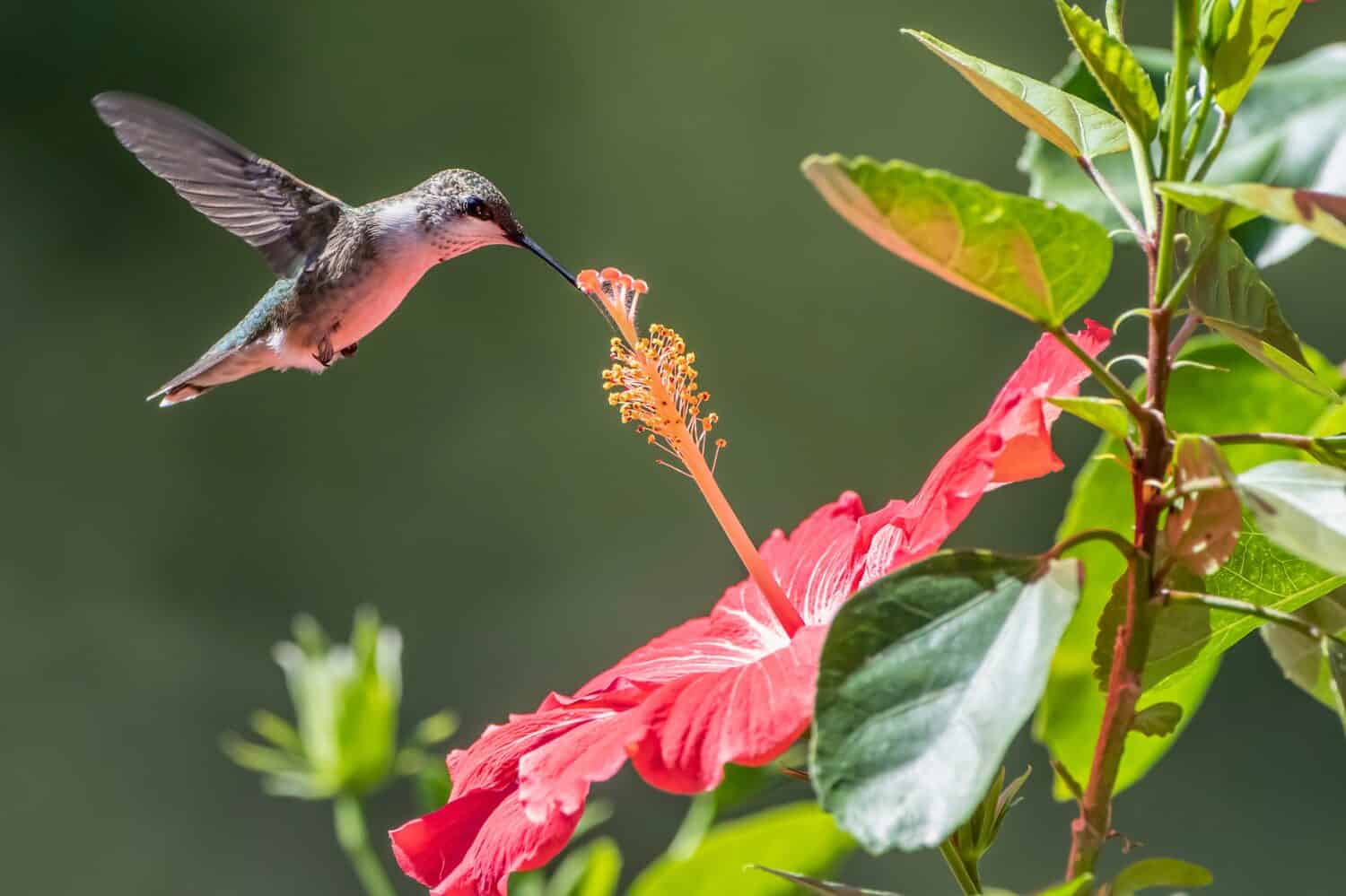Welcome to our comprehensive guide on planting and maintaining flowers, shrubs, and trees in Louisiana. In this article, we will explore the various planting zones across the state and provide you with essential tips to ensure your greenery thrives. Whether you are a seasoned gardener or a beginner, join us as we uncover the secrets of successful gardening in Louisiana’s diverse climate.
About Louisiana
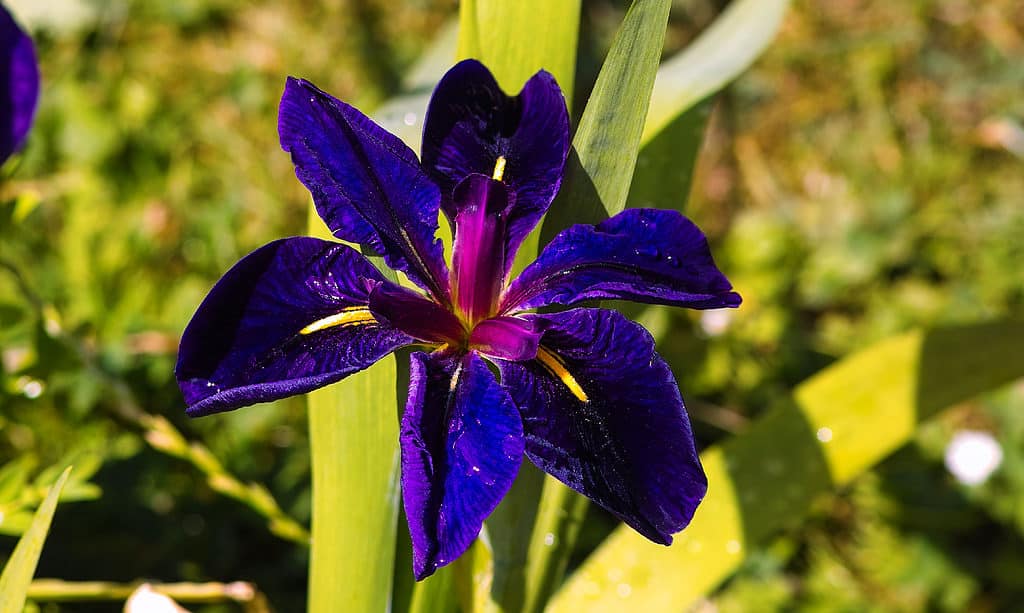
Iris nelsonii is a deep indigo blue and thrives in Louisiana.
©Ole Schoener/Shutterstock.com
Louisiana is known for its lush gardens and vibrant plant life. Gardeners, horticulturists, and plant enthusiasts from all over flock to explore the state’s many botanical wonders. Louisiana’s climate is ideal for growing a variety of both native and exotic plants. From magnolias and azaleas to tropical palms and camellias, gardeners have plenty to choose from.
The state also boasts a vibrant market for herbs, vegetables, and flowers. Gardeners can find a variety of plants, seeds, and supplies at local nurseries. In addition, there are plenty of events and gardening clubs that cater to the needs of green thumbs.
Louisiana’s Planting Zones— USDA Hardiness
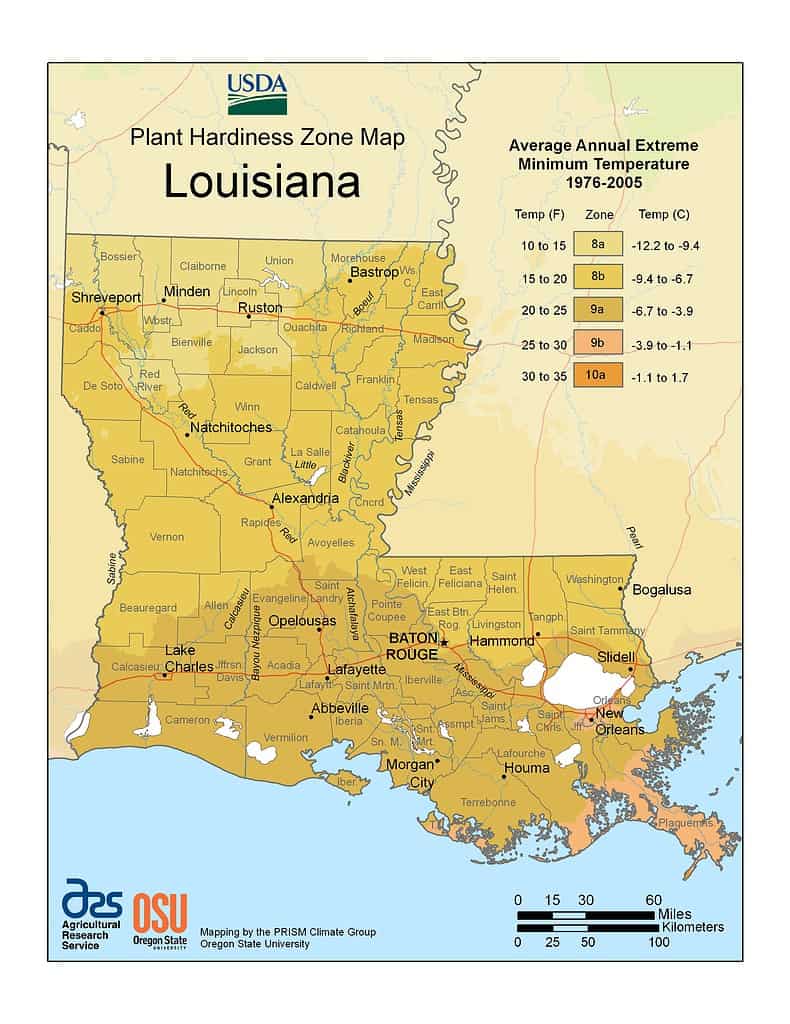
USDA Hardiness Zone Map of Louisiana
©https://pdi.scinet.usda.gov/phzm/vm/LA300.jpg – Original / License
Louisiana is divided into three distinct areas: North, Central, and South. Each area has its own unique USDA Hardiness Zone and average winter temperature.
North Louisiana falls within USDA Hardiness Zone 8a, with average winter temperatures ranging from 10 to 15°F. This area is suitable for growing many types of fruit trees and other cold-hardy plants.
Central Louisiana falls within USDA Hardiness Zone 8b and 9a, with average winter temperatures ranging from 15 to 25°F. This area is suitable for growing many types of vegetables, herbs, and flowers.
South Louisiana falls within USDA Hardiness Zone 9b and 10a, with average winter temperatures ranging from 20 to 35°F. This area is suitable for growing tropical plants and other heat-tolerant plants.
Louisiana’s Planting Zones – Heat Zones
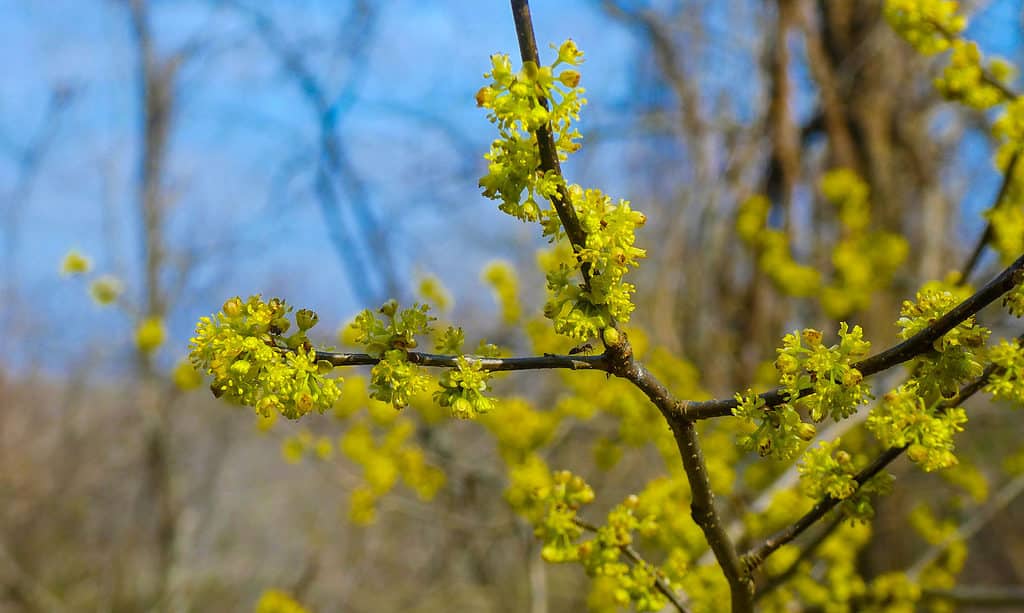
Lindera benzoin is also called spicebush, Benjamin bush, and wild allspice.
©ForestSeasons/Shutterstock.com
The American Horticultural Society has developed a Plant Heat Zone Map to give gardeners an idea of what plants will be able to survive in different climates. Louisiana falls into two different heat zones, 8 and 9. These ratings are based on how many days the temperature will be above 86°F.
Zone 8 is located in the north-central and northern parts of the state, where temperatures are milder compared to the southern parts. There are 91-120 days with temperatures above 86°F in heat zone 8. Average summer temperatures in this zone range from 75°F to 95°F.
Zone 9 is located in the southern parts of Louisiana and includes cities such as Baton Rouge and New Orleans. There are 120-150 days with temperatures above 86°F in heat zone 9. The average summer temperatures in this zone are usually higher, ranging from 80°F to 100°F.
Regardless of the zone, Louisiana’s temperatures can fluctuate significantly, so it is important to choose plants that can tolerate both warm and cold temperatures. Many vegetables and flowers that are native to Louisiana can thrive in both zones, such as daylilies, blackberries, and tomatoes.
When choosing plants for your garden, it is important to select the appropriate zone for your area. Knowing the average summer temperatures in your area will help ensure that what you plant will survive and thrive for years to come.
Louisiana’s Planting Zones—Average Rainfall
On average, Louisiana receives anywhere from 55 to 70 inches of precipitation annually. The exact amount of rainfall varies depending on the region of the state. In the northern parts of Louisiana, the annual rainfall is typically higher than in the southern regions. Additionally, the amount of rainfall in the coastal areas of Louisiana is typically higher than in the rest of the state.
This difference in annual rainfall affects the types of plants that can be grown in Louisiana. In the northern parts of the state, where rainfall is higher, more moisture-loving plants can thrive. In comparison, the drier southern parts of the state are more suited for drought-tolerant plants. Coastal regions, which typically receive more rainfall, are home to tropical and semi-tropical plants that may not be able to survive in the drier parts of the state.
Plants That Thrive in Northern Louisiana

A flowering crape myrtle is a joy to behold.
©meteorite/Shutterstock.com
- Crape Myrtle – Thrives in full sun with regular watering and is a flowering shrub that grows to a height of 10-25 feet.
- Dwarf Yaupon Holly – Thrives in full sun to partial shade with regular watering and is an evergreen shrub that grows to a height of 2-6 feet.
- Red Yucca – Thrives in full sun with minimal watering and is a perennial plant that grows to a height of 2-3 feet.
- White Holly – Thrives in full sun to partial shade with regular watering and is an evergreen shrub that grows to a height of 8-12 feet.
Plants That Thrive in Central Louisiana
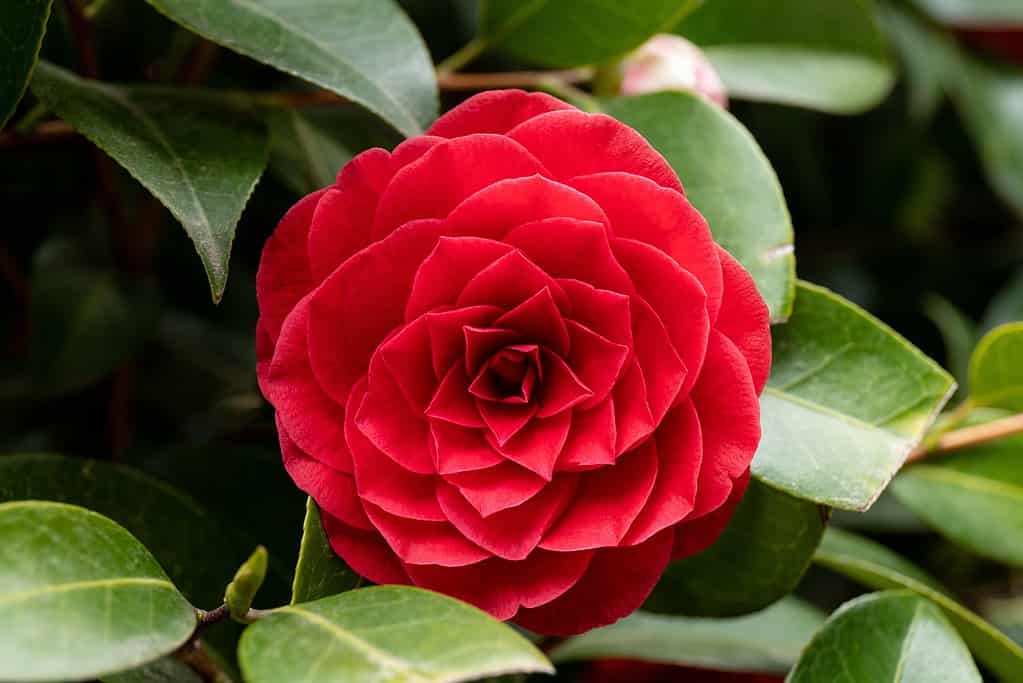
If you have a partly shady location, consider a camellia.
©Olga_Shestakova/Shutterstock.com
- Camellias: Plant in a partially shaded location with soil that drains well. Water regularly and fertilize in spring and summer. Camellias have dark green, glossy leaves and showy white, pink, or red flowers.
- Azaleas: Plant in partial to full shade in acidic soil that drains well. Water regularly and fertilize in spring. Azaleas have glossy evergreen leaves and bright, colorful flowers in shades of pink, red, and white.
- Gardenias: Plant in partial shade with acidic soil that drains well. Water regularly and fertilize in spring and summer. Gardenias have glossy green leaves and fragrant white flowers.
Plants That Thrive in Southern Louisiana
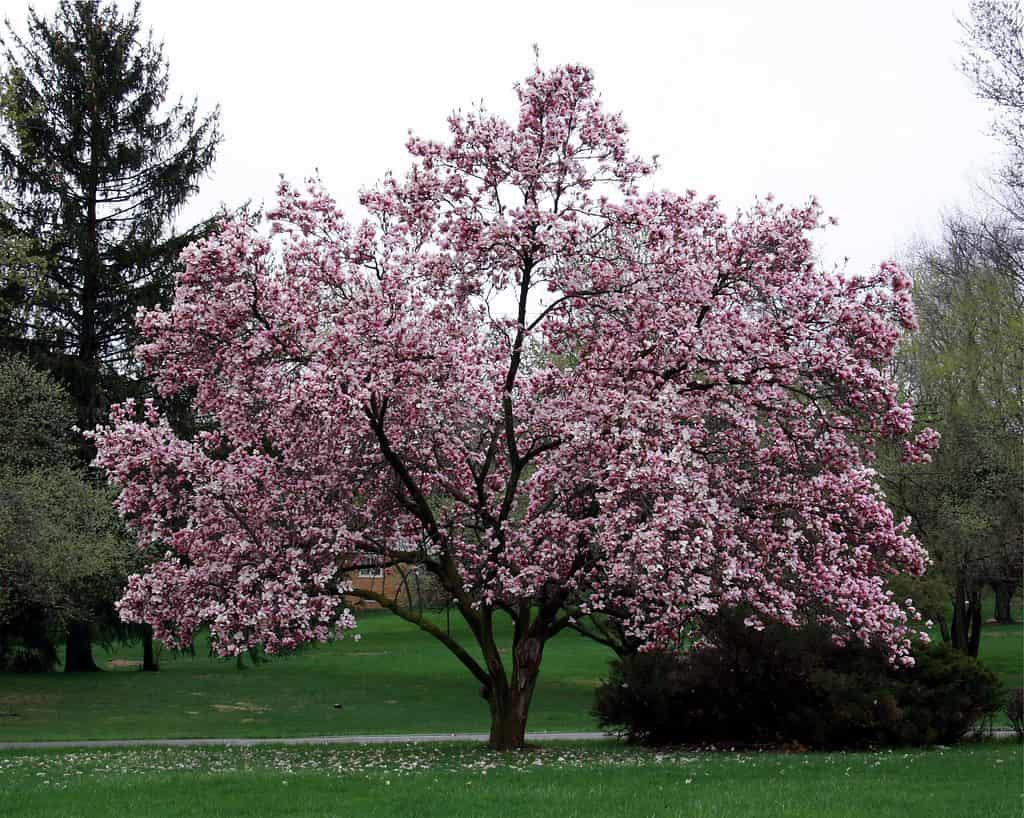
The delicate flowers of the magnolia tree are right at home in Louisiana planting zones.
©shootz photography/Shutterstock.com
- Magnolia: These trees do best in full sun and well-drained soil. They have glossy green foliage and large, fragrant white flowers.
- Crepe Myrtle: These flowering trees do best in full sun and well-drained soil. They have attractive bark that exfoliates in summer and produces vibrant, trumpet-shaped blooms in shades of pink, purple, and white.
- Hibiscus: This lovely plant grows in Louisiana’s southern planting zone. It has pink and white flowers that butterflies love. They grow best in full sun and moist, well-drained soil.
Plants That Thrive in Coastal Louisiana

With so many plants that thrive in Louisiana’s planting zones, it is hard to pick just one.
©Happy window/Shutterstock.com
- Oleander: These tough, drought-tolerant shrubs are covered in clusters of bright pink, yellow, white, and red flowers.
- Lantana: These colorful shrubs produce clusters of flowers in shades of yellow, orange, pink, and red. They need full sun to thrive.
- Spicebush: Lindera benzoin grows to a height of 5-9 feet and has a rounded shape with glossy, dark green leaves. It produces small, yellowish-green flowers in late winter and early spring. The fragrant foliage and immature red fruits are attractive to wildlife. To grow spicebush, plant it in rich, well-draining soil in a site with partial shade or full sun. Prune off any dead or diseased branches as needed.
- Virginia Willow: Itea virginica grows to a height of 6-8 feet and has a rounded shape with glossy, dark green leaves. In early summer, it produces clusters of fragrant, white flowers. To grow Virginia willow, plant it in moist, well-draining soil in a site with partial shade or full sun. Prune off any dead or diseased branches as needed.
- Louisiana Iris: Iris nelsonii grows to a height of 1-3 feet and has a clumping habit with upright, sword-shaped leaves. In late spring, it produces showy, blue-violet flowers. To grow Louisiana iris, plant it in moist, well-draining soil in a site with partial shade or full sun. It can also be grown in a bog garden or shallow water. Prune off any dead or diseased foliage as needed.
8 Keys To Keeping Flowers, Shrubs, and Trees Alive in Louisiana
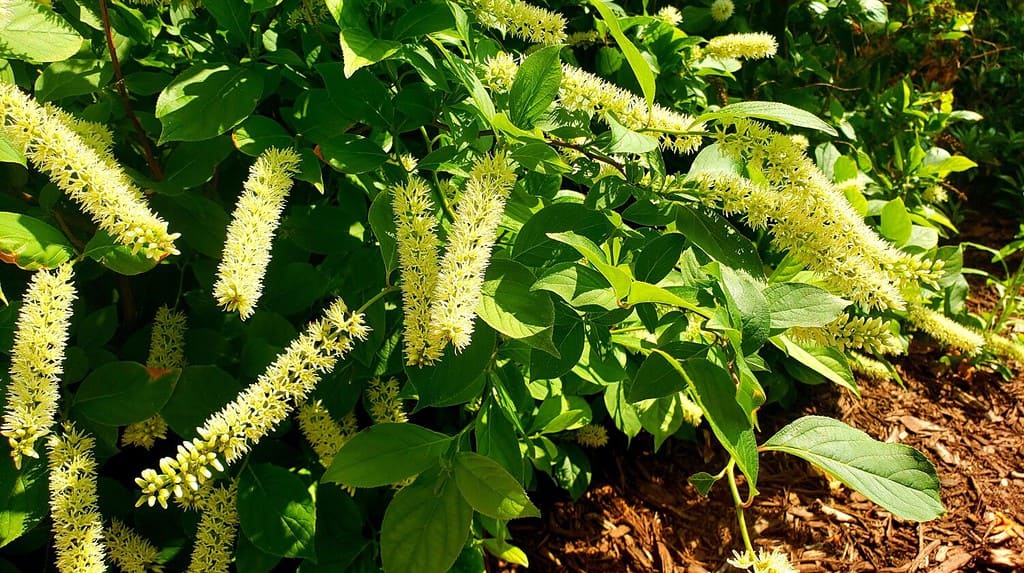
Itea virginica is also called Sweetspire and Virginia willow.
©Kazol Anthony Das/Shutterstock.com
- Plant native species that are adapted to the climate.
- Water regularly, either through rainfall or supplemental irrigation.
- Provide adequate drainage and aeration.
- Fertilize according to the needs of each plant.
- Prune plants to promote healthy growth and prevent disease.
- Protect plants from extreme temperatures and pests.
- Use mulch to help retain soil moisture.
- Monitor plants for signs of disease and take corrective action when needed.
Thank you for reading! Have some feedback for us? Contact the AZ Animals editorial team.

